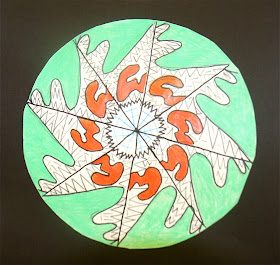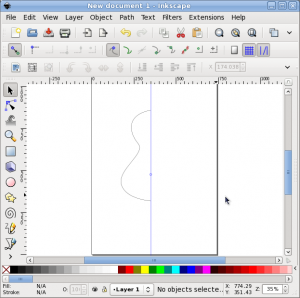

Understanding the different symmetries is necessary to have full control over The Symmetry tab is at the heart of the tiling process. This example is not so interesting, but there are many options under the dialog’s tabs that can produce many interesting effects.Įach tab will be covered in turn in the following sections.

The bounding box of the circle has been used as the base tile size. The original circle is still there, under the top-leftĬloned circle. The circle has been replicated four times in two rows and two columns. The symmetry is “P1” and there are two rows and two columns. With a circle and the default values (P1 symmetry, two rows and two columns), you will get the following tiling: And, finally, the Create button creates the tiling. The Unclump button can be used to spread out the clones in a somewhat random fashion (can be repeated). The Remove button can be used to undo a tiling when the base tile is selected. Clicking on the Reset button resets most of the entries under the tabs to their default values. Preserves the spacing between tiles if the bounding box has changed due to editing the base tile. Tile” forces the tiling to use the size and position of the base tile at the last time the tile was used in a tiling.

Checking the “Used saved size and position of the The terms Rows and Columns are only really appropriate for tiling of rectangular tiles (see below). After it closed down the third time and I lost my just-drawn "brushes," I uninstalled it and went back to the previous version 0.92.5.The Tile Clones dialog with no objects selected.Īt the bottom of the dialog is a fixed section where you can choose the size of the tiling either by the number of rows andĬolumns or by the width and height of the area you wish to cover.
#Inkscape symmetry 64 Bit
I installed the new 1.0 64 bit windows version of Inkscape and found it very buggy - it would repeatedly close itself with no warning. AI is surely tuned better than Inkscape for that purpose. Some of the "brushes" didn't perform as well as in his tutorial, relative to direction and aspect ratio, i.e., the rose would scale strangely or a leaf would be short and squat. It's very possible that he used pressure sensitivity to enhance it further. From the bit of doodling I managed with just the mouse, the look of pressure sensitivity is basically accomplished via the "brush" that is chosen. I created similar "brushes" to dagubi, kept them to the side, selected then copied the one I wanted to use. They are all so old, I'm not sure they are compatible with either, or WIN 10, for that matter. I have a few tablets, but haven't gotten around to pairing them with AI or GIMP yet.

Perhaps the "enter group" step was the crucial step I had forgotten from the previous tutorial. It makes a lot of sense to me, and achieves the end goal. Then later, when you are satisfied, mirror a scaled down version for the bottom part. You can just as well draw your scrollwork, group, mirror a clone and node edit until you have the desired look on point. This whole symmetry effect is really a bit of a gimmick.
#Inkscape symmetry plus
Plus a "brush" is really the Pattern along path LPE in Inkscape, so you need the correct pattern (look at dagubi's website - he sells brushes - you can see a screenshot of the shapes he uses). Havent tried it with the latest Inkscape 1, but drawing with pressure sensitivity didnt work as well as in AI. I can tell you that drawing scrollwork with a tablet like dagubi is much harder than it looks. This will, however, not mirror a scaled down version to the bottom. When you add/draw new elements inside the group, they will also appear inside the other cloned groups with the desired symmetry effect. Now, select the original, open the right-click menu and select "enter group". Then apply the tiled clones with two rows and two columns and the PMM symmetry.ĭelete the clone that is on top of the original. Not sure if this is what you want, but you can draw a square with no fill and a stroke for visibility and group it (yes, just this single object). So the goal is to draw scrollwork with tiled clones to get a symmetry effect ?


 0 kommentar(er)
0 kommentar(er)
